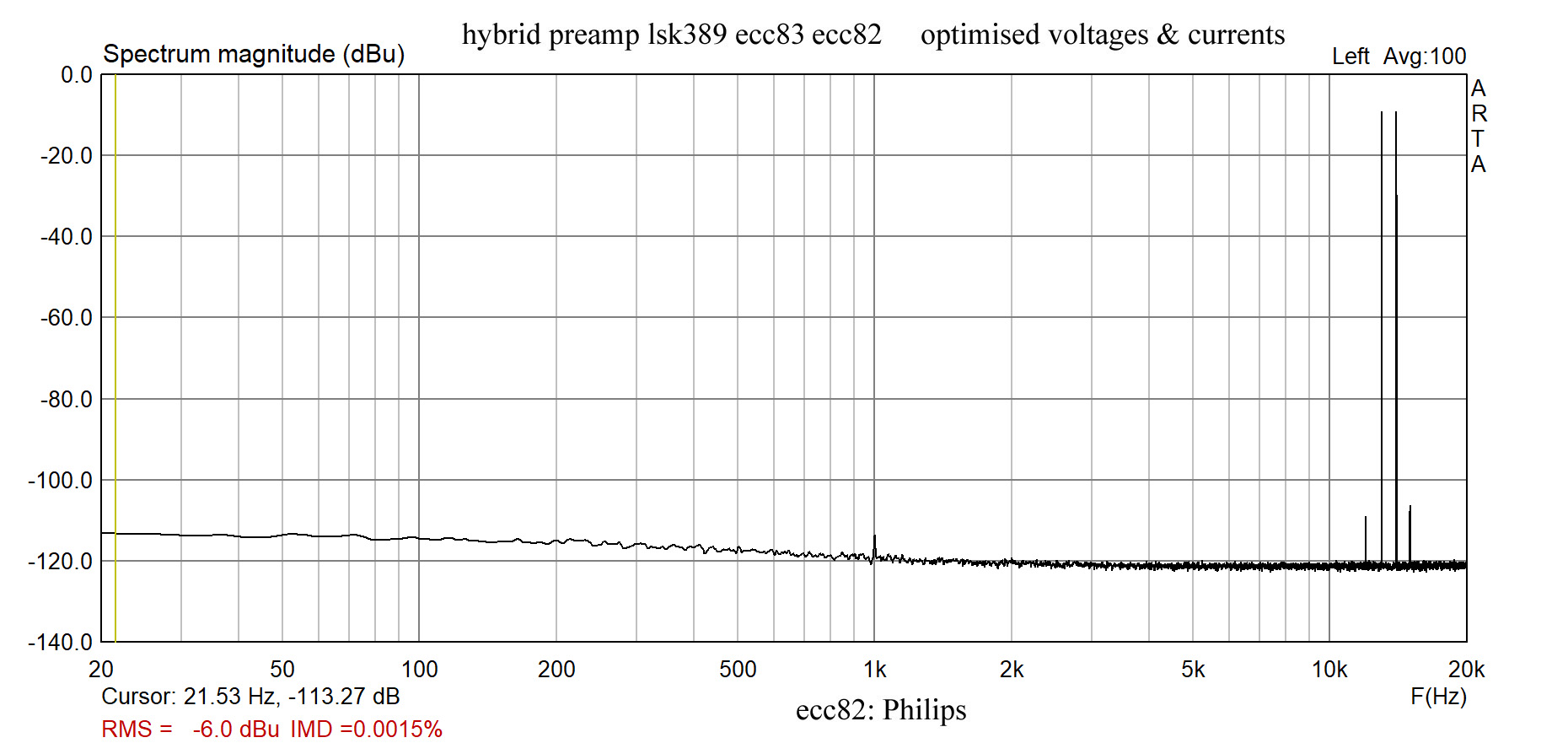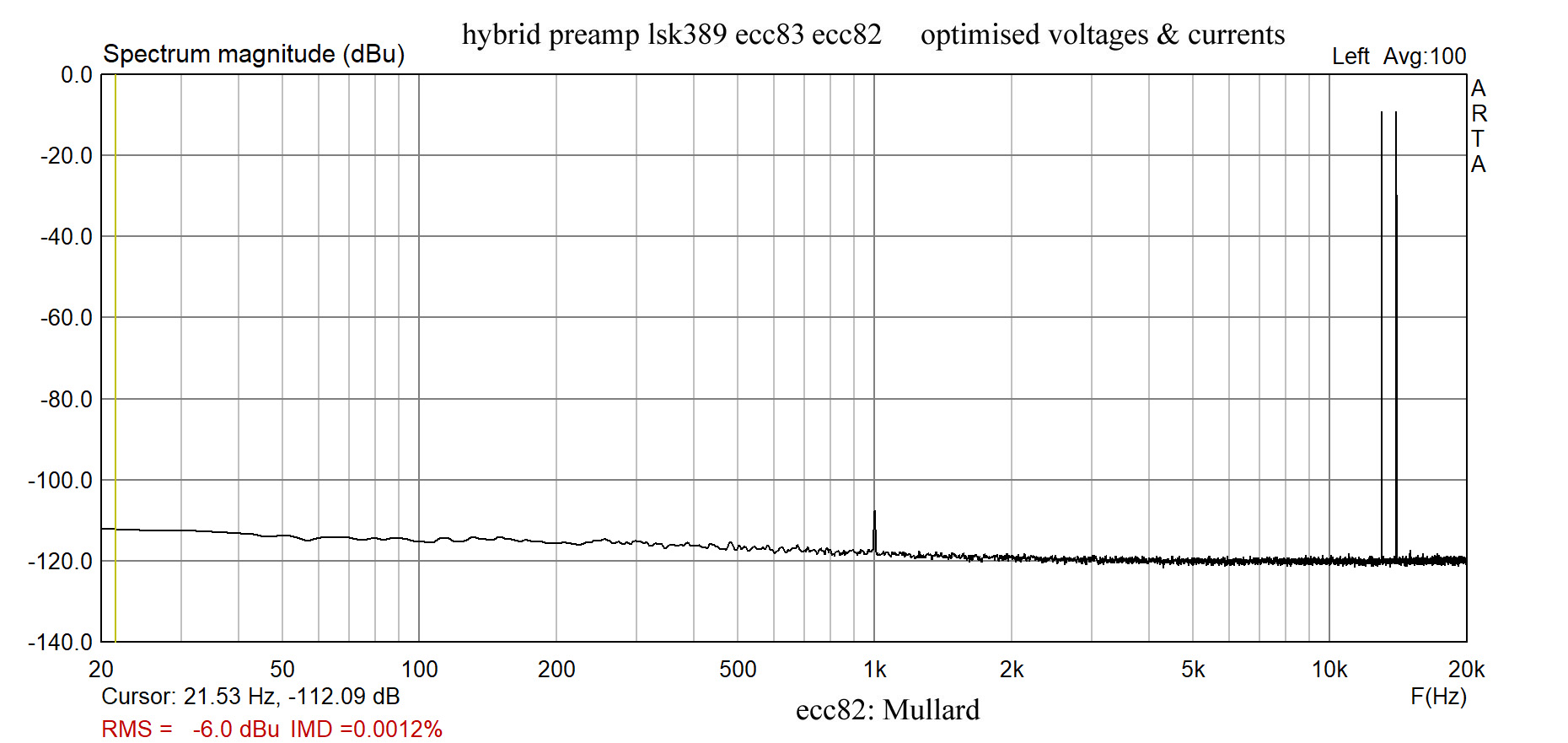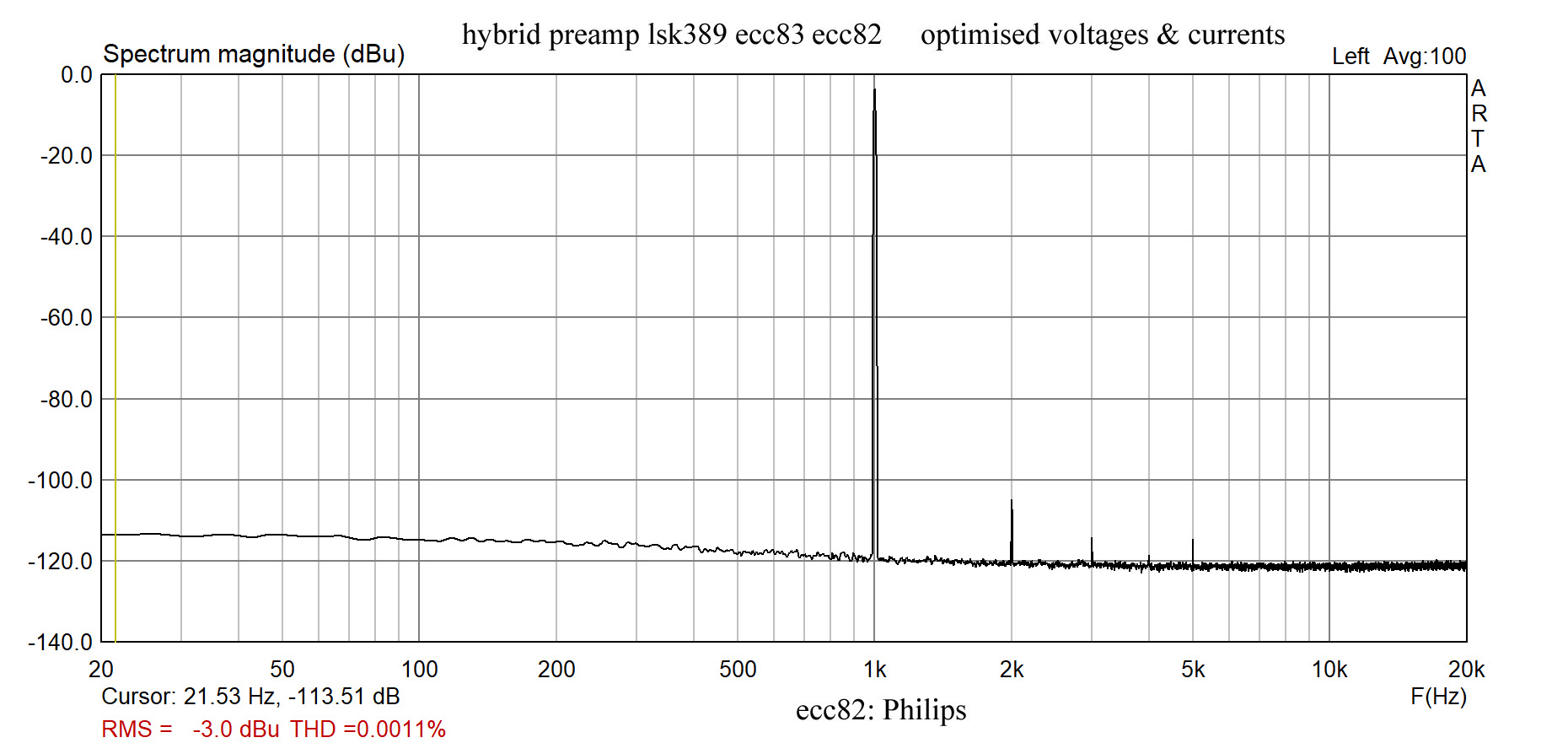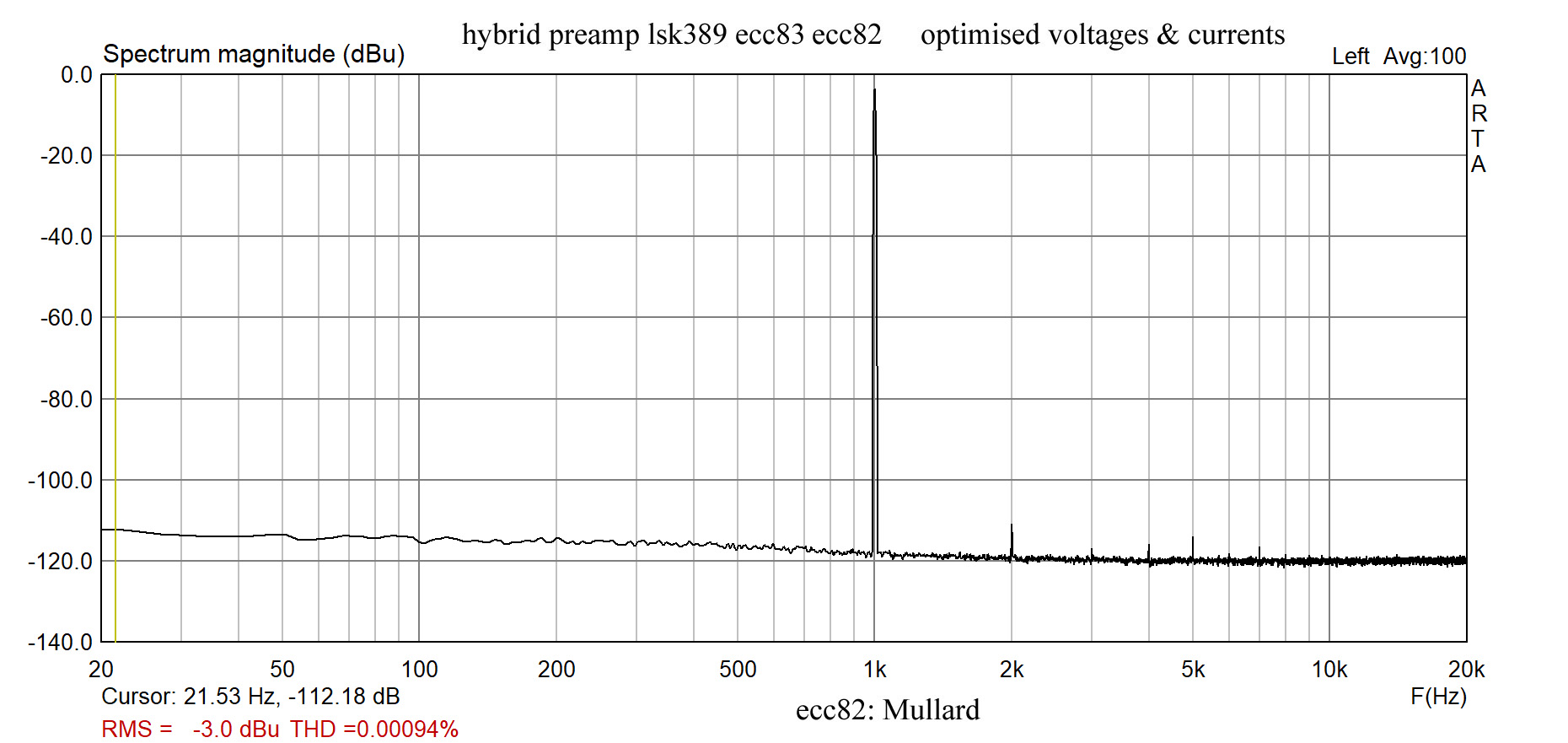Optimised voltages and currents. The third harmonic distortion peak.
When the current of the ecc82 is increased slowly, you come to a point where the third harmonic distortion peak is very low. The dissipation of the tube easily reaches 2W/triode (max. is 2.5W). So the same experiment was done again with less voltage across the tube.
Surprise! With 150V across the test tube and a current of about 8mA/triode, the third harmonic distortion peak drops below -100dBu. Idem for the 12kHz and 15kHz IMD peaks. Once over that point, the distortion increases.
Dissipation is a very reasonable 1.2W/triode.
New B+ 325V. Stabilised B+ ! Fluctuation of B+ has to be kept as low as possible.
The high tension of the unregulated PSU fluctuated 15 à 20V depending of the hour of the day.
Regulation with a few zeners and 4 transistors: bc550c, bc560c, 2sb649ac and stp9n65m2. The zeners are fed by a very stable current source. No more chokes.
Current is limited to 100mA. Fluctuation is less than 0.7V.
Adapted anode and cathode resistors.
A 100k trimpot is adjusting the current drawn by the j-fets / the ecc83. The voltage across - and the current drawn by the ecc82 is set by the changed voltage at the anodes of the ecc83.
Nice to see that adjusting a trimmer at the very beginning of the chain reduces considerably the distortion of the tube at the end.
The adapted circuit:

Below IMD and THD of the old Philips and Mullard ecc82 tubes. Incredible performance.
Tests with a french 12au7WAH Cifte tube of recent production: IMD 0.003% THD 0.004%.




Paul
When the current of the ecc82 is increased slowly, you come to a point where the third harmonic distortion peak is very low. The dissipation of the tube easily reaches 2W/triode (max. is 2.5W). So the same experiment was done again with less voltage across the tube.
Surprise! With 150V across the test tube and a current of about 8mA/triode, the third harmonic distortion peak drops below -100dBu. Idem for the 12kHz and 15kHz IMD peaks. Once over that point, the distortion increases.
Dissipation is a very reasonable 1.2W/triode.
New B+ 325V. Stabilised B+ ! Fluctuation of B+ has to be kept as low as possible.
The high tension of the unregulated PSU fluctuated 15 à 20V depending of the hour of the day.
Regulation with a few zeners and 4 transistors: bc550c, bc560c, 2sb649ac and stp9n65m2. The zeners are fed by a very stable current source. No more chokes.
Current is limited to 100mA. Fluctuation is less than 0.7V.
Adapted anode and cathode resistors.
A 100k trimpot is adjusting the current drawn by the j-fets / the ecc83. The voltage across - and the current drawn by the ecc82 is set by the changed voltage at the anodes of the ecc83.
Nice to see that adjusting a trimmer at the very beginning of the chain reduces considerably the distortion of the tube at the end.
The adapted circuit:
Below IMD and THD of the old Philips and Mullard ecc82 tubes. Incredible performance.
Tests with a french 12au7WAH Cifte tube of recent production: IMD 0.003% THD 0.004%.
Paul
Last edited:































![Soldering Iron Kit, 120W LED Digital Advanced Solder Iron Soldering Gun kit, 110V Welding Tools, Smart Temperature Control [356℉-932℉], Extra 5pcs Tips, Auto Sleep, Temp Calibration, Orange](https://m.media-amazon.com/images/I/51sFKu9SdeL._SL500_.jpg)

